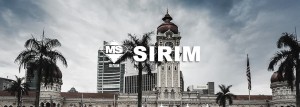Red Sea crisis may disrupt global shipping
Red Sea crisis may disrupt global shipping,
Red Sea,
▍What is CB Certification?
IECEE CB is the first genuine international system for mutual recognition of electrical equipment safety test reports. NCB (National Certification Body) reaches a multilateral agreement, which enables manufacturers to obtain national certification from other member countries under CB scheme on the basis of transferring one of the NCB certificates.
CB certificate is a formal CB scheme document issued by authorized NCB, which is to inform other NCB that the tested product samples conform to present standard requirement.
As a kind of standardized report, CB report lists relevant requirements from IEC standard item by item. CB report not only provides results of all required testing, measurement, verification, inspection and assessment with clearness and non-ambiguity, but also including photos, circuit diagram, pictures and product description. According to the rule of CB scheme, CB report will not take effect until it presents with CB certificate together.
▍Why we need CB Certification?
- Directly recognized or approved by member countries
With CB certificate and CB test report, your products can be exported to some countries directly.
- Convert to other countries certificates
The CB certificate can be directly converted to the certificate of its member countries, by providing the CB certificate, test report and difference test report (when applicable) without repeating the test, which can shorten the lead time of certification.
- Ensure the Safety of Product
The CB certification test considers the product’s reasonable use and foreseeable safety when misused. The certified product proves the satisfactory of the safety requirements.
▍Why MCM?
● Qualification: MCM is the first authorized CBTL of IEC 62133 standard qualification by TUV RH in mainland China.
● Certification and testing capability: MCM is among the first patch of testing and certification third party for IEC62133 standard, and has finished more than 7000 battery IEC62133 testing and CB reports for global clients.
● Technical support: MCM possesses more than 15 technical engineers specialized in testing as per IEC 62133 standard. MCM provides clients with comprehensive, accurate, closed-loop type of technical support and leading-edge information services.
The Red Sea is the only way for ships to travel between the Atlantic and Indian Oceans. It is located at the junction of the two continents of Asia and Africa. Its southern end connects the Arabian Sea and the Indian Ocean through the Bab el-Mandeb Strait, and its northern end connects with the Mediterranean Sea and the Atlantic Ocean through the Suez Canal. The route through the Bab el-Mandeb Strait, the Red Sea and the Suez Canal is one of the busiest shipping routes in the world. The Suez Canal should currently be the largest transportation artery in the world, especially when the Panama Canal is currently facing severe water shortages and reduced navigation capacity. As the main navigation channel for Asia-Europe, Asia-Mediterranean, and Asia-Eastern United States routes, the Suez Canal, its impact on global trade and shipping is increasingly important. According to the Neue Zürcher Zeitung, approximately 12% of global cargo transportation passes through the Red Sea and Suez Canal.Since the outbreak of a new round of Palestinian-Israeli conflict, Yemen’s Houthi armed forces have frequently launched missile and drone attacks on Israel on the grounds of “supporting Palestine” and have continuously attacked ships “associated with Israel” in the Red Sea. In view of the increasingly frequent news of commercial ships being attacked near the Red Sea-Mandeb Strait, many shipping giants around the world – Swiss Mediterranean, Danish Maersk, French CMA CGM, German Hapag-Lloyd, etc. have announced to avoid the Red Sea route. As of December 18, 2023, the world’s top five international shipping companies have announced the suspension of sailings on the Red Sea-Suez waterway. In addition, COSCO, Orient Overseas Shipping (OOCL) and Evergreen Marine Corporation (EMC) also said that their container ships will suspend sailings in the Red Sea. At this point, the world’s major container shipping companies have started or are about to suspend sailings on the Red Sea-Suez route.
The Red Sea crisis has restricted bookings on all westbound routes in East Asia, including to the Middle East, Red Sea, North Africa, Black Sea, eastern Mediterranean, western Mediterranean and northwest Europe.
The common problem currently faced, in addition to rising costs, is the lack of space. Shipping company capacity is tight, ocean freight has skyrocketed, and the huge gap in empty containers has resulted in a large number of dangerous goods (containing lithium battery cargo) being refused bookings. Priority is given to general cargo on board. Shipping lines have begun requiring cargo originally destined for the Red Sea to be rerouted around the Cape of Good Hope. This means that the original freight consignment needs to be adjusted and the transportation time needs to be extended.
If the customer does not agree to the diversion, they will be asked to empty the cargo and return the container. If the container remains occupied, additional charges for extended use must be paid. It is understood that an additional US$1,700 will be charged for every 20-foot container, and an additional US$2,600 will be charged for every 40-foot container.









